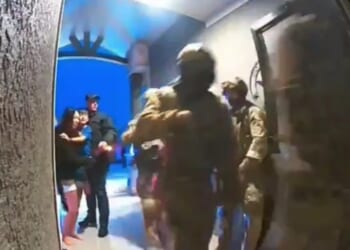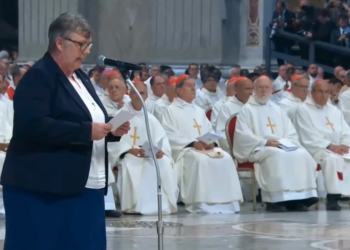The USS Harry S. Truman is returning home after an extended Red Sea deployment, joint NATO drills, and combat operations—losing three F/A-18s during the mission.
The United States Navy’s Nimitz-class nuclear-powered supercarrier USS Harry S. Truman (CVN-75) reportedly operated in the Mediterranean Sea and participated in the NATO Neptune Strike joint exercises. The warship is wrapping up nearly an eight-month deployment that included combat missions as part of Operation Rough Rider against the Houthi militants in Yemen.
That mission was paused earlier this month as the Iranian-backed group agreed to stop its attacks on commercial vessels and US Navy warships in the Red Sea. Secretary of Defense Pete Hegseth extended the USS Harry S. Truman deployment to the Middle East twice this year.
While operating in the US 6th Fleet’s area of responsibility, the USS Harry S. Truman was escorted by the Arleigh Burke-class guided-missile destroyer USS Jason Dunham and the Ticonderoga-class guided-missile cruiser USS Gettysburg.
Both warships had been part of the Carrier Strike Group (CSG) in the US 5th Fleet’s area of responsibility in the Red Sea since USS Harry S. Truman arrived in the region in late November. USS Stout, another Arleigh Burke-class destroyer, had been part of the CSG, but it is unclear if the destroyer remained in the Red Sea.
USS Carl Vinson arrived in the Middle East in April, the latest US Navy aircraft carrier to be rotated to the region since the autumn of 2023. It followed the deployment of USS Gerald R. Ford, the lead vessel of the newest class of nuclear-powered supercarriers, and the Nimitz-class flattops USS Dwight D. Eisenhower, USS Theodore Roosevelt, USS Abraham Lincoln, and USS Harry S. Truman, respectively.
The USS Harry S. Truman Loses Three FA-18 Fighter Jets
The important part is that the carrier and escorts are returning with their crew intact, but USS Harry S. Truman will arrive at Naval Station Norfolk with three fewer Boeing F/A-18 Super Hornets. One was shot down in December by the USS Gettysburg in a friendly fire incident while the vessels were operating in the Red Sea.
A second Super Hornet fell off the carrier while being towed in the hangar bay when the flattop was forced to make an evasive maneuver. A third F/A-18 was also lost following a failed landing, which necessitated the pilot and weapons station officer to eject.
Beyond the three fewer Super Hornets, when the USS Harry S. Truman arrives in Norfolk in the coming weeks, it will have a different commanding officer than when it departed last year.
In February, the 100,000-ton supercarrier underwent emergency repairs in Greece following a collision with a Panamanian cargo ship while operating in the Mediterranean Sea near Port Said, Egypt. USS Harry S. Truman was preparing to enter the Suez Canal on February 12 when it had the all-too-close encounter with the Panama-flagged Besiktas-M.
The USS Harry S. Truman’s Captain David Snowden was relieved of command and replaced by Capt. Christopher “Chowdah” Hill will be responsible for the duration of the deployment.
Hill had previously served as the CO on USS Dwight D. Eisenhower during her nearly nine-month deployment, which included operations protecting commercial shipping from the Iranian-backed Houthis. That deployment has been the most intense combat operation for the US Navy since the Second World War. The USS Dwight D. Eisenhower is now undergoing scheduled maintenance at Norfolk Naval Shipyard.
About the Author: Peter Suciu
Peter Suciu has contributed over 3,200 published pieces to more than four dozen magazines and websites over a thirty-year career in journalism. He regularly writes about military hardware, firearms history, cybersecurity, politics, and international affairs. Peter is also a Contributing Writer for Forbes and Clearance Jobs. He is based in Michigan. You can follow him on Twitter: @PeterSuciu. You can email the author: [email protected].
Image Credit: Shutterstock/freddy_the_sailor.

















